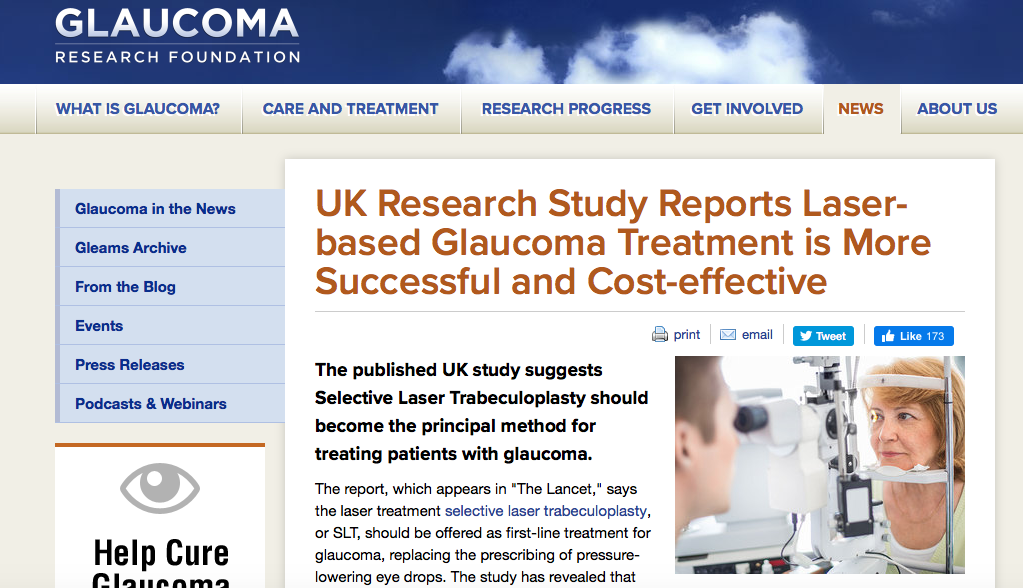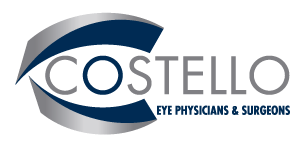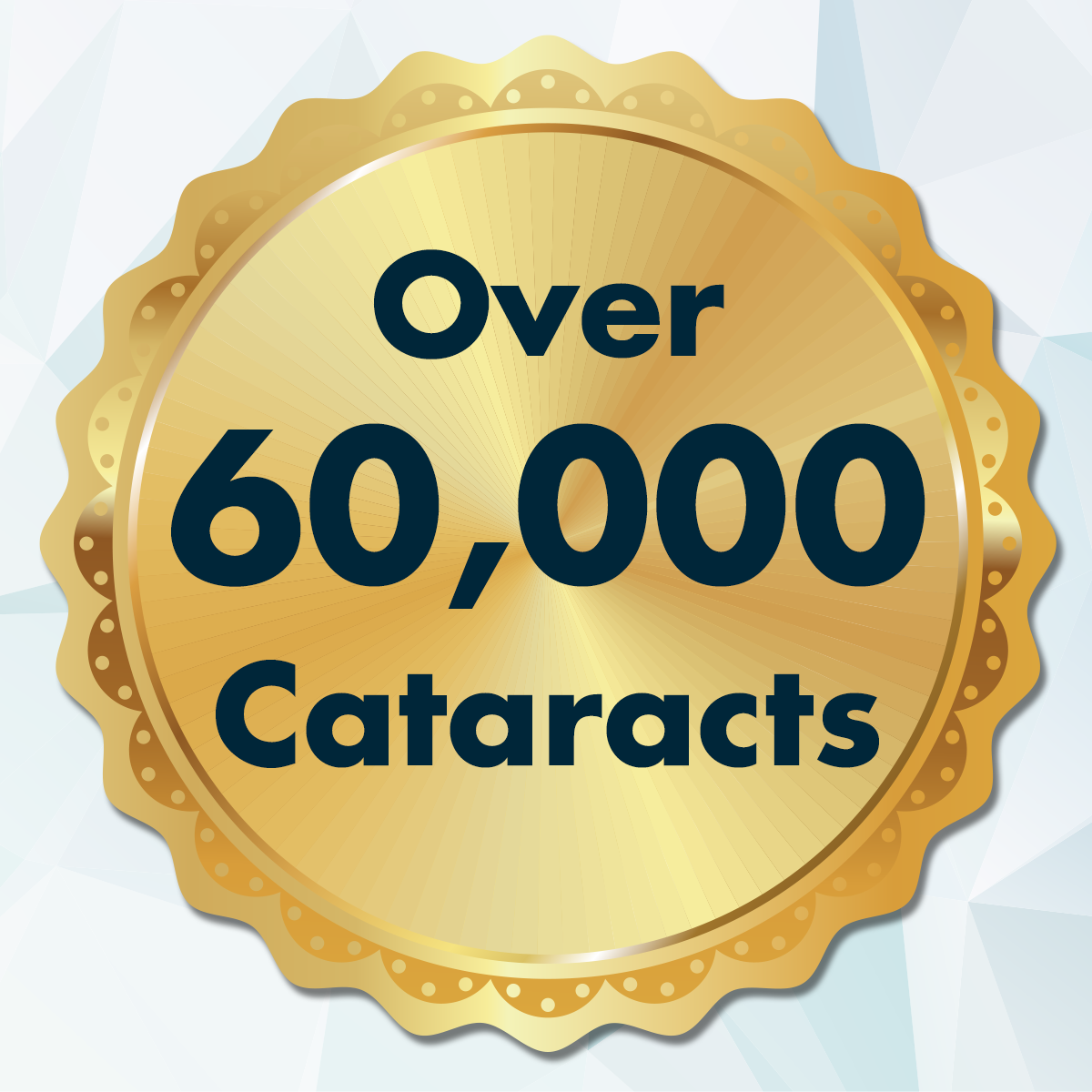Since 2005, the doctors at Costello Eye Physicians and Surgeons have offered Selective Laser Trabeculoplasty (SLT) at therapy to control the intraocular pressure in patients with Ocular Hypertension and mild, moderate and severe glaucoma. This treatment has allowed thousands of patients in our practice avoid medications and has gotten many patients off medications for glaucoma and ocular hypertension (OHT).
This safe alternative to starting a medication, replacing a medication or avoiding additional medications for glaucoma has been in use in the USA since 2003. The predecessor to SLT (ALT) could only be done up to twice in a patient’s lifetime because it scarred the drainage meshwork in the patient’s eye. SLT however can be repeated many times because it does not damage or scar the eye.
The laser works by stimulating specialized pigmented cells in the eye’s trabecular meshwork where fluid is drained in the eye.
Greater than 93% of our patients get a decrease in eye pressure of greater than 20% with SLT. Patients can usually resume their regular activities within a few hours. Side effects are exceptionally rare and last a very short time. Less than 10% of patients have a headache after the procedure. A few hours of blurry vision is not unusual.
Postoperatively, the patient is placed on a drop for a few days to keep inflammation down and help the laser work better. Eye pressure will be checked in the office a few weeks later.
How is SLT Performed?
SLT is usually performed at the surgery center and only takes a few minutes to complete treatment in both eyes. Prior to the procedure, eye drops will be given to prepare the eye for treatment. The laser applications are made through a special microscope, similar to the one used for eye examinations. About two hours at the center should be planned so all the pre and post operative drops can be placed and so the IOP can be checked after the eye is treated.
Selective Laser Trabeculoplasty:
- Easy
- Safe
- Cost Effective
- Efficacious
- Repeatable
- Eliminates Compliance with meds as issue
A recent study in Britain has shown that SLT is the best alternative when choosing initial therapy for glaucoma


The published UK study suggests Selective Laser Trabeculoplasty should become the principal method for treating patients with glaucoma.
The report, which appears in “The Lancet,” says the laser treatment selective laser trabeculoplasty, or SLT, should be offered as first-line treatment for glaucoma, replacing the prescribing of pressure-lowering eye drops. The study has revealed that SLT is not only more effective and safer, but can also save money in health care costs.
“Simple, safe, pain-free laser treatments not only work better than eye drops but they cost the NHS less,” said one of the report’s authors, Gus Gazzard, who is based at Moorfields Eye Hospital in London. “Using a laser for a one-off treatment also relieves patients from the tyranny of daily drops, which they have to take for the rest of their lives, and which can also produce side-effects.”
Side-effects associated with the drops include increased risks of developing eye cataracts in later life, as well as a reduced pulse rate and fatigue.
Glaucoma is one of the world’s leading causes of blindness. Most patients with the disease are given medication eye drops. These help fluid to drain away more effectively from the eye. They also decrease the amount of liquid made within the eye. However, the eye drops have to be taken every day. By contrast, SLT is a relatively new treatment that can be performed in a hospital out-patient clinic in about 15 minutes.
The patient sits in front of a microscope-like device and looks into it. About 100 tiny laser pulses are flashed into the eyes. These trigger slight inflammation at the points where liquid leaves the eye, and so disrupts the blockages there. As liquid levels lower, pressure within the eye decreases and the glaucoma improves.
Researchers set up a three-year trial involving 718 patients who had been newly diagnosed with open-angle glaucoma. Then they compared the effectiveness of the treatments they received.
Results — published to coincide with World Glaucoma Week — demonstrate clearly that patients who received SLT had better and more stable eye pressures. There was also less need for glaucoma surgery and cataract extractions.
SLT also has important implications for nations that lack sophisticated health services. SLT treatment has less need for follow-up treatments or ongoing prescriptions of drugs.
“This landmark study has the potential to make life better for millions of glaucoma patients around the world,” said Thomas Brunner, President and CEO of Glaucoma Research Foundation. “It is the largest study of its kind and the results showed that SLT, a low level light therapy, had significant improvement in outcomes with reduced risk and cost. Especially in developing countries, SLT first could be a major step to prevent blindness from glaucoma.”
David Friedman MD, MPH, PhD, Alfred Sommer professor of public health ophthalmology at the Wilmer Eye Institute of Johns Hopkins University School of Medicine, director of the Dana Centre for Preventive Opthalmology and senior ophthalmologist at Helen Keller International said: “These findings will have a tremendous impact on the care of glaucoma patients, and the results should lead to improvements in the treatment of glaucoma worldwide. This is the largest trial ever to address this important question and it provides strong support that SLT should be considered as first-line treatment for glaucoma.”
Robert Stamper, MD, Distinguished Professor of Clinical Ophthalmology and Director Emeritus of the Glaucoma Service at University of California San Francisco, said: “This very important study shows that at two years, patients with open-angle glaucoma treated initially with a simple 5 minute laser procedure did as well or better than those treated with drops and at lower cost. The implications for the initial treatment of glaucoma are profound in both the developed and resource-challenged parts of the world.”
Laser in Glaucoma and ocular HyperTension study:
- LiGHT Study published April 2019
- Observer-masked, randomized controlled trial conducted at the Moorfields Eye Hospital and five other hospitals across the UK
- 718 patients (1,235 eyes) with newly diagnosed, untreated open angle glaucoma (OAG) or ocular hypertension randomized to SLT or medications
- Disease severity, baseline IOP were used to set individual pressure targets, treatment intensity and monitoring intervals.
- In the medical therapy group, prostaglandin analogs (PGI2s) were used as first line
KEY POINTS OF THE STUDY RESULTS AT 3 YEARS
- 78.2% of SLT were at target pressure without medications.
- Of those ¾’s required only one laser treatment.
- Disease progression occurred less frequently with SLT
- 11 of the eyes in the medicine group required trabeculectomy due to uncontrolled IOP and or visual field progression.
- NONE of the eyes in the SLT group required surgery.
LESS CATARACT WITH SLT
- Cataract also occurred more frequently over the 3 years with eye drops
- 25 with drops VS 13 with SLT
- Supporting existing evidence that topical medications used to treat glaucoma may accelerate cataract formation
SLT as 1st line HIGHLY COST EFFECTIVE
Overall direct savings to National Health service in Britain £451 ($650) per year
- Easy
- No long term risk
- Eliminates compliance problems
– (cost, difficulty placing drops – eyelid spasm, arthritis, tremors, side effects, burning and taste sensation, remembering)
FINDINGS SUGGEST:
- SLT should be offered as first line therapy
- More effective at preventing invasive surgery and disease progression
- Less expensive
- Decrease cataract progression
- Less likely to need more medications or surgery






